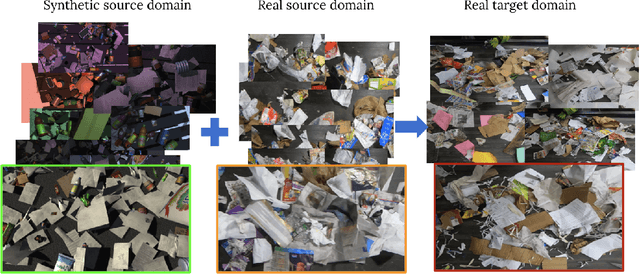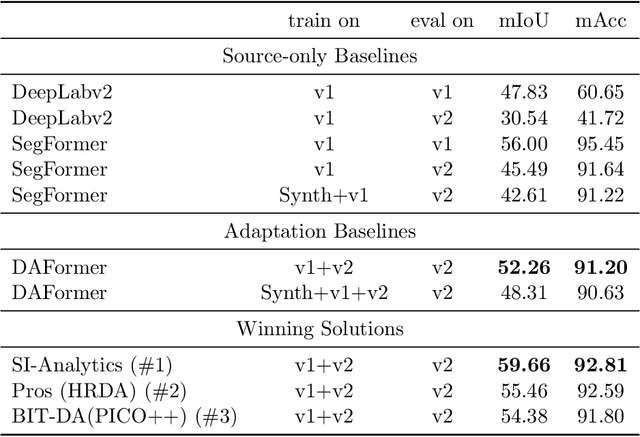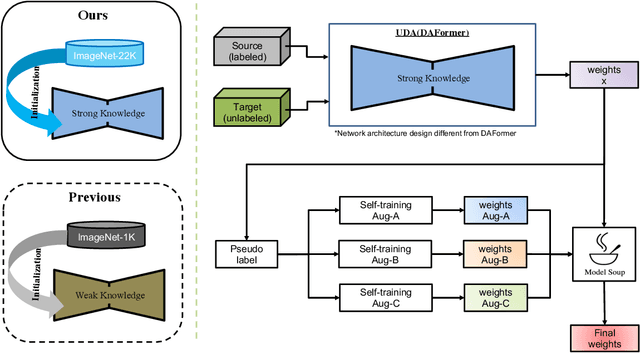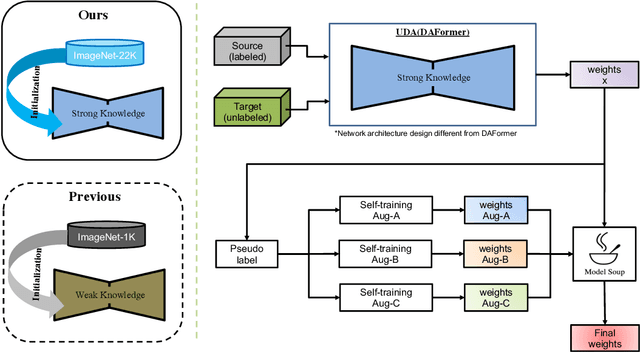YoungJin Jeon
VisDA 2022 Challenge: Domain Adaptation for Industrial Waste Sorting
Mar 26, 2023



Abstract:Label-efficient and reliable semantic segmentation is essential for many real-life applications, especially for industrial settings with high visual diversity, such as waste sorting. In industrial waste sorting, one of the biggest challenges is the extreme diversity of the input stream depending on factors like the location of the sorting facility, the equipment available in the facility, and the time of year, all of which significantly impact the composition and visual appearance of the waste stream. These changes in the data are called ``visual domains'', and label-efficient adaptation of models to such domains is needed for successful semantic segmentation of industrial waste. To test the abilities of computer vision models on this task, we present the VisDA 2022 Challenge on Domain Adaptation for Industrial Waste Sorting. Our challenge incorporates a fully-annotated waste sorting dataset, ZeroWaste, collected from two real material recovery facilities in different locations and seasons, as well as a novel procedurally generated synthetic waste sorting dataset, SynthWaste. In this competition, we aim to answer two questions: 1) can we leverage domain adaptation techniques to minimize the domain gap? and 2) can synthetic data augmentation improve performance on this task and help adapt to changing data distributions? The results of the competition show that industrial waste detection poses a real domain adaptation problem, that domain generalization techniques such as augmentations, ensembling, etc., improve the overall performance on the unlabeled target domain examples, and that leveraging synthetic data effectively remains an open problem. See https://ai.bu.edu/visda-2022/
1st Place Solution to NeurIPS 2022 Challenge on Visual Domain Adaptation
Nov 26, 2022



Abstract:The Visual Domain Adaptation(VisDA) 2022 Challenge calls for an unsupervised domain adaptive model in semantic segmentation tasks for industrial waste sorting. In this paper, we introduce the SIA_Adapt method, which incorporates several methods for domain adaptive models. The core of our method in the transferable representation from large-scale pre-training. In this process, we choose a network architecture that differs from the state-of-the-art for domain adaptation. After that, self-training using pseudo-labels helps to make the initial adaptation model more adaptable to the target domain. Finally, the model soup scheme helped to improve the generalization performance in the target domain. Our method SIA_Adapt achieves 1st place in the VisDA2022 challenge. The code is available on https: //github.com/DaehanKim-Korea/VisDA2022_Winner_Solution.
 Add to Chrome
Add to Chrome Add to Firefox
Add to Firefox Add to Edge
Add to Edge